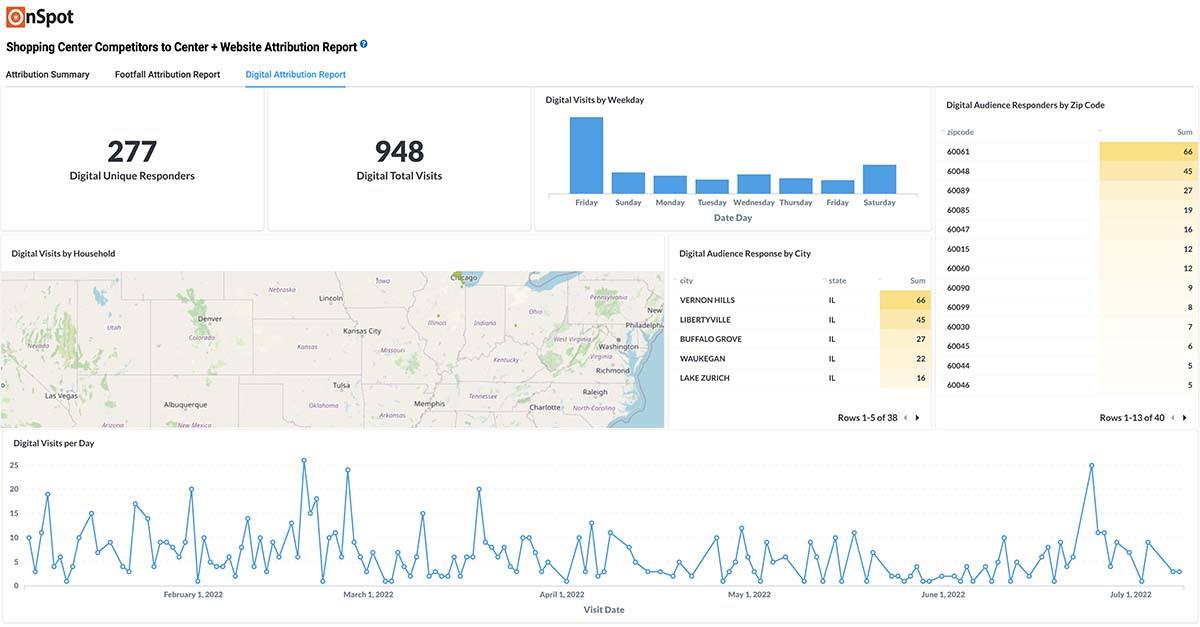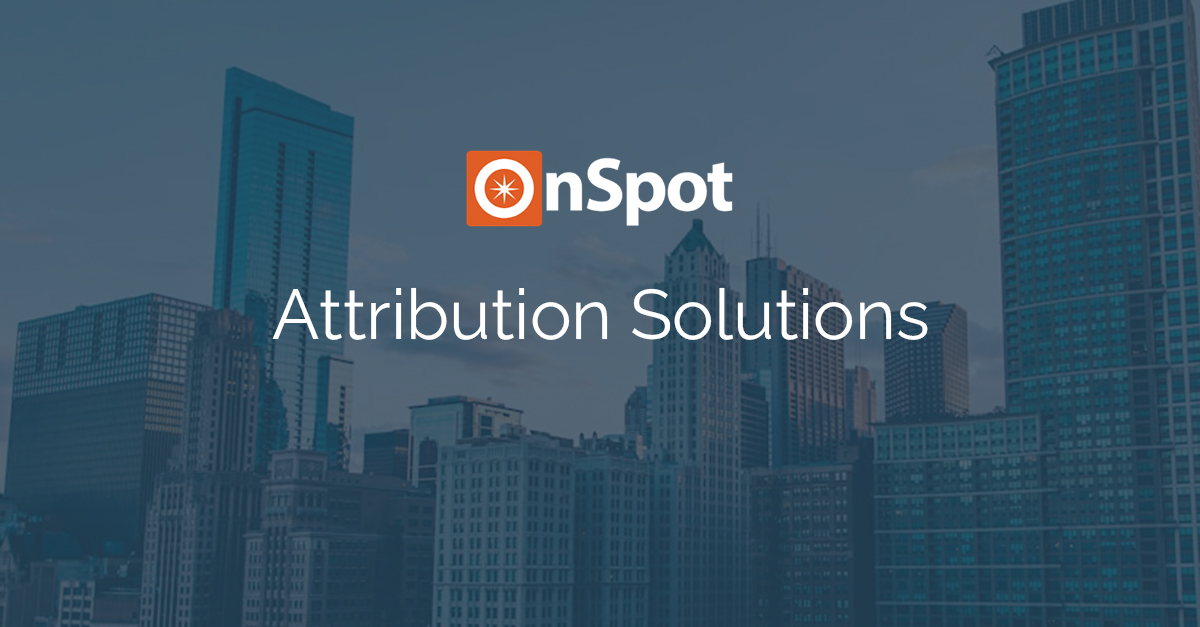Your team has put in hours of work and capital to perfect your marketing strategy. Since each marketing campaign requires an investment, it’s important to determine if that investment was worth the effort.
Assessing the success of your marketing campaign can be done through in-house analytics which are designed to help plan, target, track, drive, reach, optimize, engage, test, and turn marketing leads into conversions.
But the above data points may not tell the entire story. If you cannot track and measure all the ways your customers move through the purchase journey, you are going to miss out on path-to-purchase opportunities.
In 2017, Google was able to draw a connection between online ads and offline visits to physical stores. They found that 30% of users with a mobile device were likely to buy something in-store 24 hours after they visited the company’s website or app from their mobile device. Additionally, statistics reflect that 78% of location-based mobile searches typically results in an offline purchase.
With large amounts of people still making purchases in-store, it is increasingly necessary to measure campaign effectiveness for online-to-offline (O2O) methods. If you’re not sure where to start, we are here to help. This article will break down:
- What offline visitation is
- It’s application to the data-driven attribution model
- Variables to consider when measuring offline visitation
- And the different outcomes of performance analytics
What is Offline Visitation?
Offline visitation is a variable that marketers measure to determine whether a marketing asset correlates to a sales purchase in-store. Offline visitation is usually measured by geographically-based data that is provided by mobile devices. Things like IPs, cookies, and mobile ad IDs provide traceable data points that can be measured against real-time sales lifts, in-store footfall, and other omnichannel KPIs.
Companies that generate revenue from an in-person store yet market online will need to track the potential effectiveness of a digital or mobile ad at driving a consumer to purchase (or convert) in person. This method of conversion is referred to as online-to-offline (O2O).
This variable also contributes to data-driven attribution so that your team can see all the marketing touchpoints that have lead to a conversion.
By introducing offline visitation into your analytics methods, your company can more effectively measure offline impact, Return On Advertising Spend (ROAS), ROI, omnichannel outcomes, and future omnichannel strategies.
Offline Visitation and the Data-Driven Attribution Model
While there are numerous attribution models for measuring offline visitation, the data-driven model is believed to be the most comprehensive and fact-based.
Simply put, the data-driven model is notable because it shifts away from single-touch attribution models and gives other touchpoints along the marketing trail more credit for a conversion.
Last-touch attribution models, for example, only give credit to the touchpoint just prior to conversion. We know that this final touchpoint is not always the only element influencing that conversion.
The data-driven attribution model consists of predictive algorithms and integrated analytics. Since its appearance in 2017, this model has allowed marketers insight into customer behavior which can recoup the 20-40% of potential ROI that can be left behind when relying on last-touch models.
The application of offline visitation into the data-driven model makes intuitive sense. With the emergence of eCommerce and digital marketing, new advertising avenues are ripe for exploration. Advertising in a variety of digital channels goes a long way in communicating a brand’s narrative or vision to potential consumers.
The reason why offline visitation is reliant on data-driven attribution is simple: offline visitation typically exists without any known or traceable physical touchpoints. Therefore, if a digital ad encouraged a consumer to purchase with your company, the last touch attribution model would not see this conversation and would categorize it under some other type of sale or conversion.
Variables to Consider When Measuring Offline Visitation
Before diving into the actionable ways that offline visitation can be measured, let’s first go over the primary variables that you’ll need to consider.
Sales Data
Data-driven sales are the process of collecting, organizing, and utilizing customer and informational transaction data to better understand your business. Sales data is used for determining best-fit customer bases or for reaching other optimizing outcomes.
Similarly, sales data can help you determine the geographical relevance of your consumer base, their preferences, their spending habits, and other behavioral factors.
Types of sales data that you may already know include year-over-year (YOY) growth, market penetration, total revenue, and revenue per sale. However, your method and business goals will determine which types of sales data you need to collect.
Foot Traffic
Typically, businesses that experience higher foot traffic have higher sales and revenue numbers. There are a variety of ways to measure foot traffic: in-store sensors, heat maps, surveillance cameras, and WiFi.
Unfortunately, these tools might not always be accurate or tell much about how these customers came to your store in the first place. And they often need to be paired with other measurement tools (such as in-store surveillance or CRM data) in order to create or further a marketing initiative.
One way in which foot traffic data has improved is through the use of mobile ad IDs. Here at OnSpot Data, we utilize the unique mobile ad ID that each phone is given in order to identify when a mobile device is in a certain area, leading companies to audiences that are more likely to make a purchase.
Lift
A sales lift is a basic campaign measurement used to identify if sales lifted or were affected by a prior marketing campaign or sales period. This will usually look at sales values, but it might also compare foot traffic and other forms of campaign measurement.
Lift analysis can also occur in a variety of ways and throughout different campaign points. For testing and comparative analytics, a lift analysis might compare two stores within the same
market to identify if whether or not a strategy is impacting that particular market. A similar analysis can occur between different markets.
Other strategies might look to campaign time slots. This analysis might necessitate adjustments in order to optimize a strategy, even in the middle of a campaign’s implementation.
Incremental Visits
An incremental visit is a metric that compares the number of visitors who were exposed to a given ad and compares that data to those who weren’t exposed to it. According to S4M, the cost per incremental visit (CPIV) was important for measuring campaign effectiveness, although specific benchmarks depend on the industry.
Therefore, incremental marketers will look at their industry benchmarks to slowly increase product exposure. Incremental revenue can be segmented into sales periods so that you can visualize ad expenses and frequency against revenue.
Campaign Analytics With Mobile Ad IDs
Clearly, offline visitation plays a large role in determining whether or not a marketing campaign was effective. If you can connect in-store visitation to a mobile ad, then you are on your way to identifying a consumer’s path-to-purchase, the effectiveness of that ad, as well as the time decay.
The most accurate measure of offline visitation is through mobile ad ID data. Each phone is equipped with a unique mobile ad identifier, which allows companies like Facebook to push relevant and localized ads to user’s mobile devices. The data from mobile ad IDs can tell you: where a consumer was in relation to a business and when they were there. Since this information is provided based on historical data, then its use continues to protect consumer privacy.
This data can provide key insights, such as:
- Whether a mobile ad was shown to the user
- The time decay from mobile ad to purchase
- Correlations between ads and physicality or locality
- Correlations between performance variables (such as line items) or industries
- A plethora of behavioral data
- And much more
Data can be collected from a certain geoframe or city to measure real-time attribution rates, to adjust incremental campaigns in real-time, or to capture a geographically-unique demographic. This data can then be compared against other offline visitation variables, such as revenue numbers, sale lift analyses, and CRM data.
Measure More Effectively With OnSpot Data
Measuring marketing effectiveness is vital to understanding how a business can maximize its profit, measure and achieve sales goals, and expand their target base. And with an increased focus on digital and online marketing, it is vital to connect offline trends to better and more accurately understand the effectiveness of these campaigns.
See how OnSpot Data can accurately and ethically connect your digital marketing campaigns with offline visitation.



